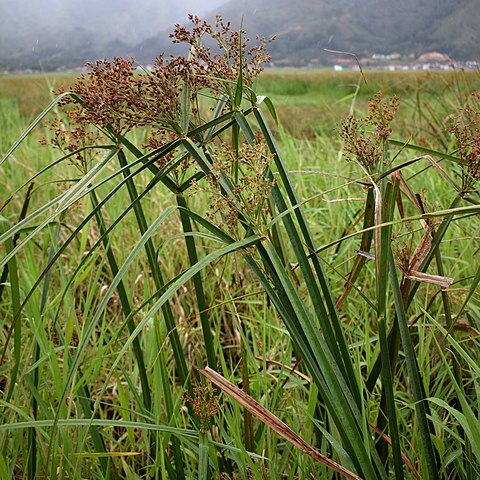Plants stoloniferous. Culms scattered, 1-2 m tall, 1-1.2 cm thick, acutely 3-angled, smooth, clothed at base with 1 or 2 spongy leaf sheaths which disintegrate into reticulate fibers. Leaves basal only (not cauline), shorter than culm; sheaths spongy; leaf blade 7-12 mm wide, margin scabrous. Involucral bracts 3 or 4, leaflike, basal 1-3 longer than inflorescence, margin apically scabrous. Inflorescence a terminal compound anthela, with over 10 rays and many spikelets; rays to 5 cm, scabrous. Spikelets solitary, rust-colored to dark brown, sessile or pedunculate, ovoid to ellipsoid, 4-5 × 2.5-3 mm, densely many flowered. Glumes elliptic to broadly ovate, ca. 2.5 mm, membranous, margin apically ciliolate, apex obtuse with a green costa excurrent into a mucro. Perianth bristles 6, longer than nutlet, retrorsely scabrous. Stamens 3; anthers linear; connective apex black, deltoid, very short. Style ± long; stigmas 3. Nutlet pale brownish yellow, obovoid to subellipsoid, ca. 1.5 mm, compressed 3-sided, apex beaked. Fl. and fr. Jul-Oct. 2n = ca. 88.
More
A coarse sedge with triangular stems up to 2 m high. It develops runners. The stems are sharply triangle shaped. The edges are rough and it curves inwards. The leaves are about half the length of the stem. The leaf sheaths are 14-20 cm long. The leaf blade is 60-100 cm long and 1-2 cm wide. The large flower clusters have broad leaf-like bracts up to 60 cm long.


